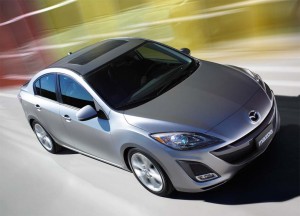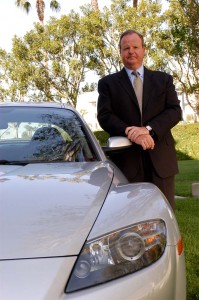Though it’s abandoning its long-time advertising agency, don’t expect Mazda to walk away from the popular Zoom-Zoom tagline that has made the Japanese maker such a standout in the otherwise crowded automotive marketing space.
If anything, the familiar campaign — meant to position Mazda as a more performance-oriented marque among mainstream brands – will become even more critical, what with the Japanese carmaker looking to boost its American market share by as much as 50%.
“Zoom-Zoom is not going away,” Jim O’Sullivan, president of Mazda’s North American sales subsidiary, tells TheDetroitBureau.com. “We’re not doing away with our creative and brand positioning,” despite the decision to leave the Detroit-based agency, Doner, for MindShare, a division of the global advertising powerhouse, WPP. “It’s our DNA,” O’Sullivan contends.
The decision to drop Doner came as something of a surprise considering the successful collaboration between the agency and automaker. There’s been plenty of debate about why Mazda made the move, though O’Sullivan insists it was not driven by the corporate parent, in Japan.
The problem, he says, is that the independent Doner is a relatively small firm compared to a global network like WPP, which can provide more direct resources to its clients. “We selected WPP because of their broad capabilities and portfolio of brands that we can tap into.”
Despite their parting, O’Sullivan offers nothing but compliments for Mazda’s long-time creative partner – it was Doner that developed the Zoom-Zoom theme, the new “Inner Driver” campaign, and the new “Driverville” game app Mazda is running on Facebook.
The decision to switch agencies wasn’t quite so much a surprise, this year, considering how many other automakers have been shopping for new ad partners. One of the biggest divorces involved Chevrolet, which abandoned Campbell-Ewald, which had been its agency of record for more than three-quarters of a century.
But WPP won’t have an easy ride. Mazda’s sales have roughly kept pace with the overall industry during this year of slow recovery in the U.S. market, rising by about 14%. But status quo isn’t what the second-tier maker has in mind.
O’Sullivan wants to push Mazda’s current 2% market share “much, much higher, to 2.5% to 3%, he says.” And he points to the brand’s 5% position in Canada to suggest it’s possible to gain ground south of the border, as well.
If anything, Mazda may be missing some growth opportunities, though O’Sullivan says he’s fine with that if it means holding back on fleet sales – which now represent less than 10% of the company’s overall U.S. volume — and maintaining discipline when it comes to incentives. While he declines to provide specific numbers, the former Ford executive claims Mazda’s recent incentives have been running well below those of the first-tier Japanese makers, notably including Toyota, which has been struggling to reverse the damage done by its ongoing safety scandal.
Building a stronger image – and backing it with new product – will be the key to Mazda’s future, company executives contend. The latest addition to the line-up is the subcompact Mazda2. The maker’s initial target for the $15,000 five-door hatchback is modest, about 20,000 sales annually, in the U.S. But O’Sullivan notes that Mazda’s plants are some of the industry’s most flexible and could readily expand Mazda2 production if demand grows.
A market rebound would certainly help – especially if it’s accompanied by an anticipated upsurge in fuel prices, which many analysts expect over the next several years. The consulting firm, IIHS Global Insights predicts the overall U.S. small car market should jump from 533,200, this year, to more than 1 million in 2013.
At 35 mpg on the highway, fuel economy will certainly be one of the pitches WPP will likely make on Mazda’s behalf. And the company is pushing to get even more aggressive over the next several years. It will launch a new line of high-mileage powertrains, both gasoline and diesel, in 2012.
At the New York Auto Show, last March, Mazda Motors CEO Takashi Yamanouchi said the powertrains — dubbed Sky, as in “the sky’s the limit,” he said – will boost fuel economy by 15% over the company’s current engines, with a similar bump in performance.
That will be critical for Mazda, which has been slow to move on hybrid and other battery technologies. But, says O’Sullivan, that may not be necessary because, “We’re coming close to duplicating hybrid fuel economy with Sky’s gasoline technology.”
The executive also notes that Mazda is the only Asian maker now committing to bring a diesel powertrain into the U.S. While he won’t confirm which car will get the technology, speculation centers around the Mazda3.
“There’s a strong likelihood,” O’Sullivan hints, that specific details will be announced, later this year, at the Los Angeles Auto Show.


